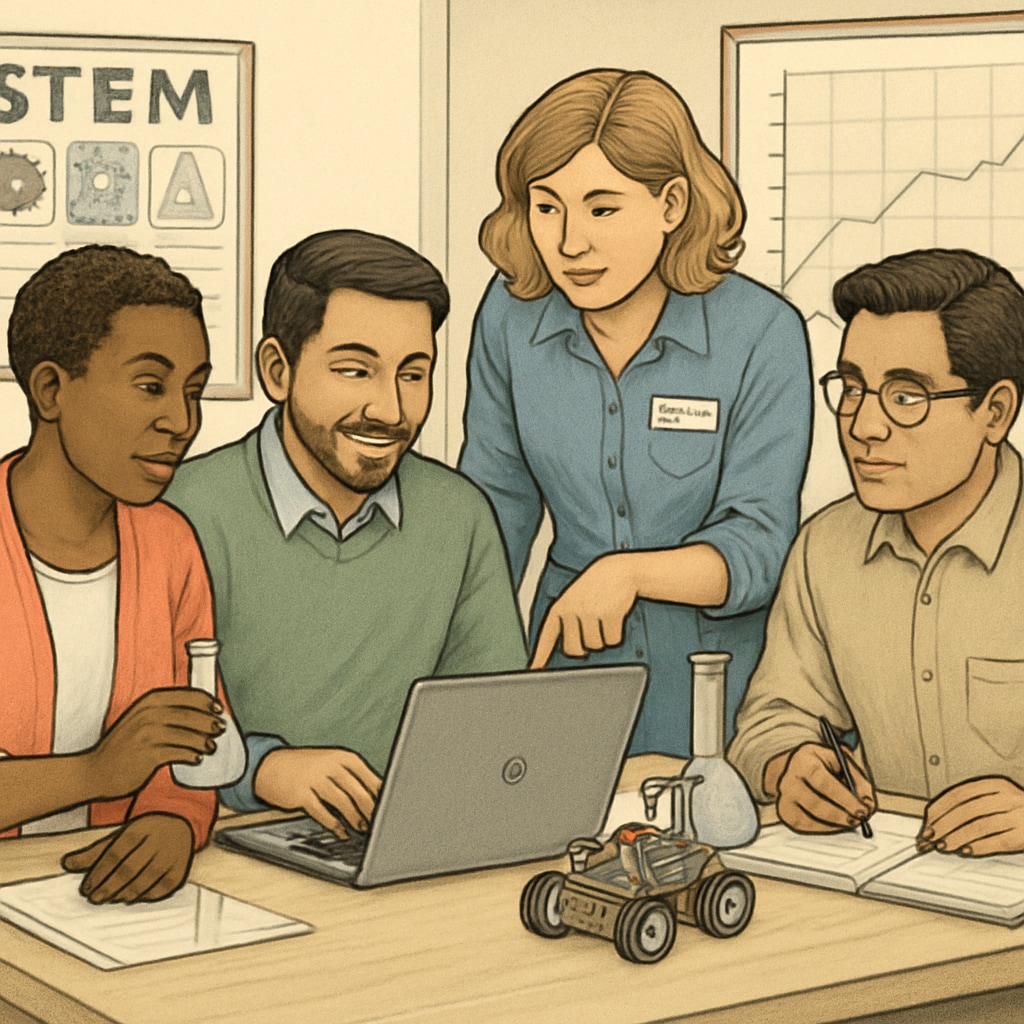The OpenSciEd middle school science community is setting a new standard in STEM education reform. By providing an open platform for educators to collaborate, share innovative ideas, and collectively improve science teaching methods, this community is more than just a resource—it’s a movement. As STEM (Science, Technology, Engineering, and Mathematics) education becomes a top priority worldwide, OpenSciEd offers a unique approach to tackling current challenges in science education. But how does this community work, and why is it so valuable for educators?
What Makes OpenSciEd a Game-Changer in STEM Education?
OpenSciEd stands out because it combines a comprehensive middle school science curriculum with a collaborative community of teachers and education experts. The curriculum is open-source, meaning it’s freely available for anyone to use and adapt. This accessibility empowers educators, especially those in underfunded schools, to provide high-quality science education without financial barriers.
In addition to its curriculum, OpenSciEd fosters a thriving community where educators can exchange ideas and best practices. This collaborative effort ensures that the curriculum evolves based on real-world classroom experiences, making it more effective and relevant. For example, teachers can share feedback on how specific lessons resonate with students or suggest modifications to address diverse learning needs.

Why Educator Participation Is the Key to Success
The success of OpenSciEd lies in its emphasis on collective wisdom. When teachers actively engage with the community, they contribute to a shared knowledge base that benefits everyone. Here are some ways educators are making a difference:
- Sharing Insights: Teachers can discuss what works and what doesn’t in their classrooms, helping others to refine their approaches.
- Adapting Resources: The open-source nature of the curriculum allows educators to tailor lessons to meet the unique needs of their students.
- Professional Growth: By participating in the community, teachers gain access to professional development opportunities, including workshops and webinars.
This collaborative approach not only improves the curriculum but also builds a strong network of educators who are passionate about making science education better for students everywhere.

How OpenSciEd is Transforming STEM Education Globally
OpenSciEd is not just limited to the United States; its principles and resources are influencing science education worldwide. By prioritizing accessibility and adaptability, OpenSciEd addresses global challenges such as the lack of resources in underprivileged schools and the need for culturally relevant teaching materials. For example, educators in different countries can modify the curriculum to include local scientific phenomena, making lessons more engaging and relatable for their students.
Furthermore, the OpenSciEd community exemplifies the power of open educational resources (OER). By removing financial and intellectual property barriers, OER initiatives like OpenSciEd ensure that quality education is a right, not a privilege. This philosophy aligns with global education goals, such as the United Nations’ Sustainable Development Goal 4 (Quality Education), which aims to ensure inclusive and equitable education for all.
Looking Ahead: The Future of STEM Education with OpenSciEd
As the OpenSciEd community continues to grow, its potential impact on STEM education is limitless. By fostering innovation, collaboration, and inclusivity, this platform is helping educators prepare students for the challenges of the 21st century. However, its success depends on the active participation of teachers, school administrators, and policymakers.
For educators who want to make a difference, joining the OpenSciEd community is a step toward transforming science education. Whether you’re sharing your expertise, learning from others, or adapting the curriculum to your needs, your contributions are vital to this movement. Together, we can build a future where every student has access to high-quality STEM education.
Conclusion: OpenSciEd’s middle school science community is more than just a curriculum—it’s a catalyst for change. By leveraging the power of collaboration and collective wisdom, it’s paving the way for a brighter future in STEM education.


